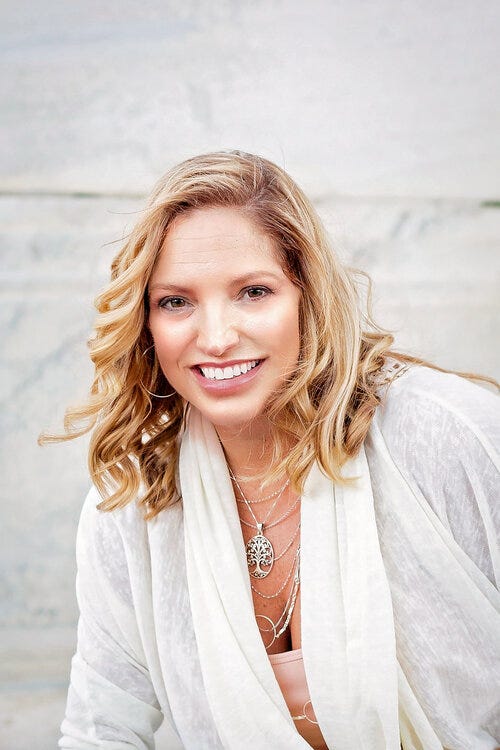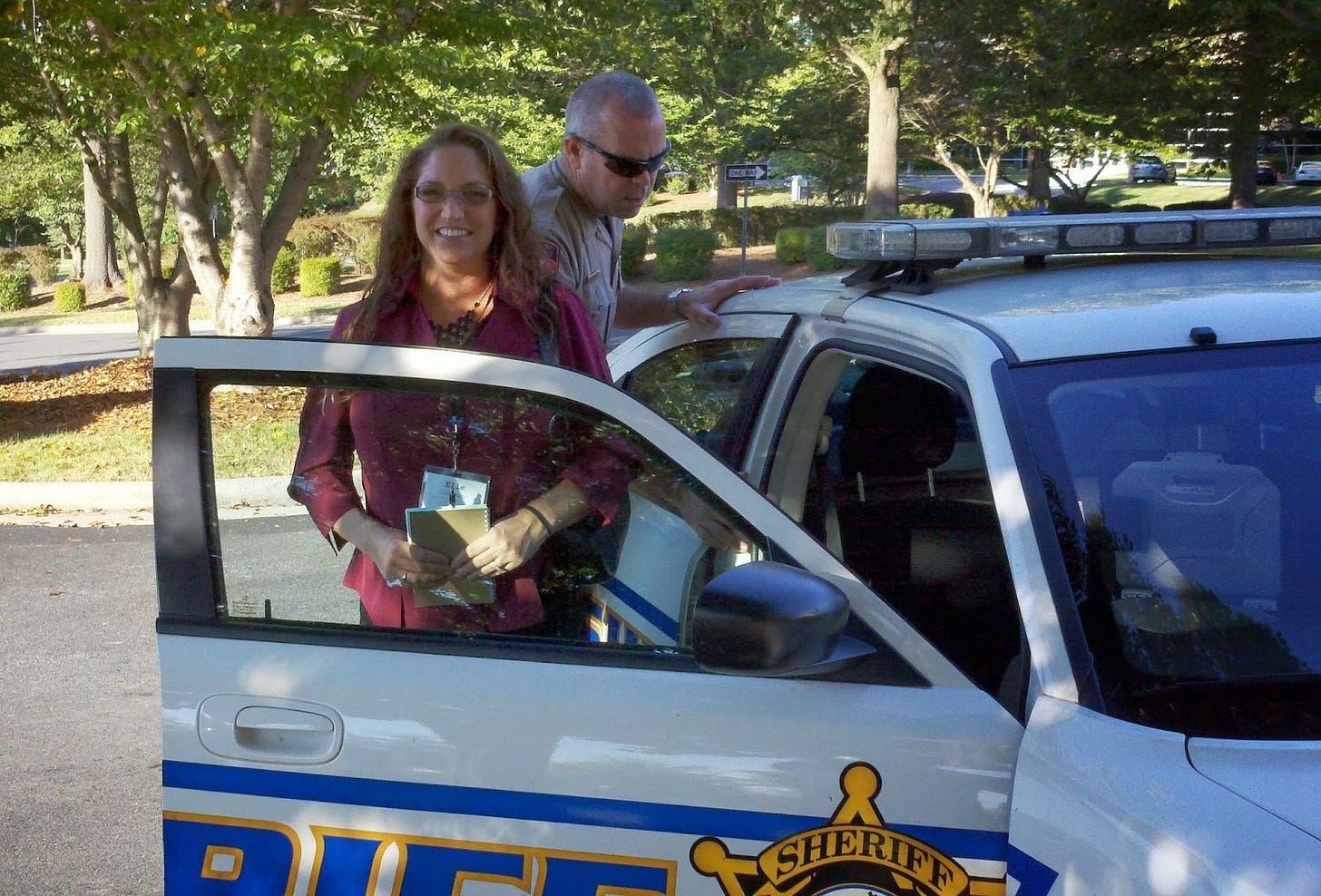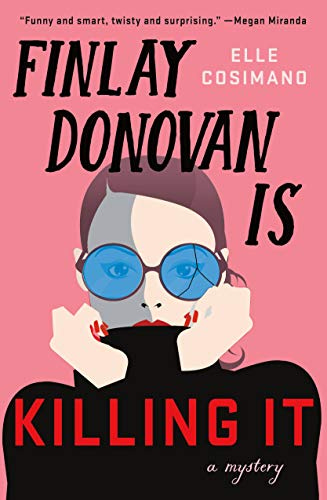Six Questions with Mystery Writer Elle Cosimano
She takes us behind the scenes on her writing process
Elle Cosimano’s Finlay Donovan is Killing It, a mystery about a suburban mom who is mistaken for a hitwoman, is so funny I felt awkward reading it in public because I was laughing so hard.
I was lucky enough to receive an advanced copy of the sequel, Finlay Donovan Knocks ‘Em Dead, which comes out next week, and am happy to report it met my very high expectations.
Prior to the Finlay Donovan series, Elle published the young adult novels Nearly Gone, Holding Smoke, The Suffering Tree, and Seasons of the Storm. Elle was kind enough to answer a few questions via email about Finlay Donovan, her time at the Writers’ Police Academy and more.
I know for your previous books you attended the Writers’ Police Academy. Can you share a bit about the process of writing and researching Finlay Donovan is Killing It?
Absolutely! Over the last two years, most of my research has been limited to non-fiction books, Google searches, and email interviews.
However, in the earlier part of my career, I was fortunate to attend several sessions of an annual Writers’ Police Academy. WPA is an intensive research conference for writers, offering hands-on workshops in almost every subject crime writers may want to learn more about. It provided me with opportunities to do ride-alongs, participate in mock murder trials, try my hand at fingerprinting, handcuffing, firearm simulations, jail searches, and so much more.
Those hands-on experiences carried me through many of my novels — which I’m even more grateful for now, since COVID has made it increasingly difficult to leave the house for research — but these workshops also gave me the confidence to seek out research opportunities on my own. My favorite was a personal guided tour of the Northern Regional Forensics Lab in Manassas, Virginia (the same one that appears in my novels Nearly Found and Finlay Donovan is Killing It).
Finlay Donovan is Killing It is your first book for adults. How does writing YA compare to writing an adult book?
I think a lot of people assume that the process of crafting books for adults versus young adults is vastly different. In my experience, it’s very much the same. My process of creating character arcs and exploring themes doesn’t change with the age of my protagonist. I’m asking all the same questions of my characters—who are you at the beginning of the story, and who do I need you to become by the end? What are your fears? What are your secrets? What do you most desire?
For me, the only difference between YA and adult books is the lens of life experience the story is narrated through. I love writing about young adults because they are experiencing so many firsts, discovering who they are. I love writing about adults like Finlay Donovan because she is rediscovering herself, experiencing new firsts as she is rewriting her life story.
Finlay is such a fun, interesting character. How did you go about creating her?
The idea for Finlay Donovan came to me in a crowded Panera in 2017, while I was having a working lunch with two of my longtime critique partners.
We were brainstorming through a scene I was drafting, which happened to involve a particularly violent murder and questions over what to do with the body, when the woman at the table beside us seemed very concerned. It occurred to me that she was probably eavesdropping and had (understandably) misunderstood the nature of our conversation.
From there, the basic premise of the story was born — a down-on-her-luck suspense novelist is discussing the plot of her latest book with her agent over lunch when she’s overheard by a woman who mistakes Finlay for a contract killer and offers her $50,000 to dispose of her problem husband.
Later that night, while brainstorming in our pajamas over drinks and junk food, my critique partners helped me to come up with Finlay’s character. It seems fitting that this book is, at its heart, a story about women supporting other women, because it was in that spirit that Finlay’s character was born.
Finlay's relationship with her children's nanny Vero is becoming an emotional core of the series. Why did you decide to focus on their relationship?
I didn’t set out to write a story about these two women forming a partnership. It happened organically as I was drafting.
Originally, Vero’s appearance in the story was intended to be an obstacle Finlay would have to overcome — the nanny shows up at the worst possible moment, catching Finlay as she’s committing a terrible crime — but these two characters had such great chemistry on the page!
Their dialogue felt so natural and compelling to me, and while they’re at very different stages of their lives with very different personalities, it occurred to me that they both needed the kind of support the other could provide. It felt like this perfect symbiotic relationship and it held such potential for growth. I knew as soon as I finished the scene that Vero was going to become a pivotal character in the books.
Both Finlay Donovan books feature multiple plotlines that converge. How do you track and manage them all?
The drafting process for me is mostly one of discovery. I begin with a rough outline, consisting of very spare notes for a handful of key scenes. As I write, I’m exploring. I don’t always know all the plotlines, how they will eventually connect, or the overarching themes until I’m nearing the end. I do most of my heavy lifting in revision.
It’s only once I’ve finished a first draft that I go back through each scene, looking for missed opportunities to connect story threads, to cut parts that aren’t propelling the story forward or revealing important aspects of plot or character. It’s not a process of managing plotlines as much as it is finding efficient and effective ways to weave them through the story. The lion’s share of my work isn’t writing as much as re-writing.
Any books you want to recommend?
In YA thrillers, I’m a huge fan of Andrea Contos, and her latest novel Out of the Fire was a stunner! In the realm of adult mystery, I’m currently devouring an e-galley of Like A Sister by Kellye Garrett. When driving, I’m listening to Grave Reservations by Cherie Priest and it’s a delight—the narrator is fantastic! And I’m reading a gorgeous new hardback debut called Hello, Transcriber by Hannah Morrissey, a taut, dark thriller that’s giving me chills.
Next up on my TBR is The Half-Life of Ruby Fielding by Lydia Kang. Lydia’s stories are always smart and unique, and this mysterious historical thriller looks riveting. I can’t wait to dive in! So many books, so little time.
Thanks to Elle for answering my questions. You can order Finlay Donovan is Killing It here and pre-order Finlay Donovan Knocks ‘Em Dead here, and follow Elle on Facebook, Twitter and Instagram.
What to Read If is a free weekly book recommendation newsletter. Need a rec? Want to gush about a book? Reply to this email, leave a comment or find me on Twitter @elizabethheld.
If you’re reading this on Substack or were forwarded this email, and you’d like to subscribe, click the button below.
Disclosure: I am an affiliate of Bookshop.org and I will earn a commission if you click through and make a purchase.







Such a great interview! I particularly liked the section about drafting and keeping track of plot lines. I felt some solidarity for my own novel-writing process, which mostly includes setting the characters free on the page and cleaning up after the messes they make ;)
Have been dying to read Finlay Donovan! Also, can I just say I loved reading Substack Grow's interview with you?! Especially, the bit about the bingo card haha!